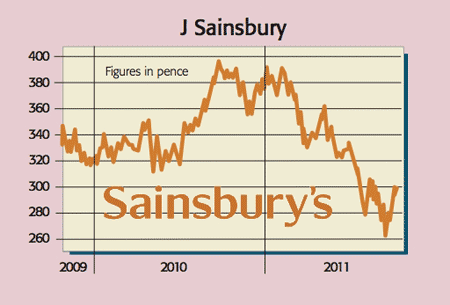
What is it?
Sainsbury’s is Britain’s third-largest supermarket chain with a UK market share of 15.9%. It has 934 stores (577 supermarkets and 377 convenience stores) with a combined selling area of 19.1 million square feet. It also has a 50:50 joint venture with Lloyds Banking Group in Sainsbury’s Bank.
What is the company’s history?
Sainsbury’s was formed in 1869 when John Sainsbury opened the first store in London’s Drury Lane. Its first self-service supermarket was opened in Croydon in 1950. During the 1970s and 1980s Sainsbury’s became the dominant force in British food retailing. In the early 1980s it bought US supermarket chain Shaw’s. In Britain, it diversified into hypermarkets with the SavaCentre brand, and into do-it-yourself with Homebase. In the 1990s, it lost its leading position to Tesco, after which it seemed to lack a coherent strategy and profits declined. The arrival of Justin King as chief executive (CEO) in 2004 has seen Sainsbury’s establish its ability to attract customers and grow profits again.
Who runs things?
Justin King has been CEO since 2004, having previously been director of food at Marks & Spencer as well as holding senior management roles at rival chain Asda. His total pay in 2010 was £1.7m. Ex-GUS plc finance director David Tyler is chairman. John Rogers is chief financial officer.
How’s trading?
In the 16 weeks to 1 October, total sales (excluding fuel) grew by 4.4%, with like-for-like sales increasing by 1.9% as competition remained intense. In the grocery section, Sainsbury’s own label and ‘Taste The Difference’ brands saw strong growth. Non-foodsales continued to grow faster than those of food, with strong growth in clothing and school wear. The group’s convenience stores saw sales growth of 20%, with underlying growth considerably stronger than in its supermarkets.
What’s the outlook?
With disposable incomes under pressure, aggressive price competition in food retail, and plans for lots of new stores, many believe that Sainsbury’s is heading for trouble. Its vulnerability is highlighted by its low margins of 3.5% (Morrisons and Tesco are on more than 5%) and its weak trading intensity – £20 per square foot per week compared with £22.40 for Morrisons and £25 for Tesco. To counter this, Sainsbury’s grocery and non-food offerings continue to attract customers, while its share price – trading at around net asset value – arguably reflects a very pessimistic outlook for the stock.
The analysts
Of the 35 analysts surveyed by Bloomberg, eight say “buy”, 17 “hold” and ten “sell”. The average price target is 311p – 5% above the current share price. Most bullish is Berenberg Bank with a 370p price target, whereas Citigroup is most bearish with a 240p target. Our view: despite a tough trading environment, Sainsbury’s share price has strong asset backing and a 5.3% dividend yield – at this level, the shares look good value and are a buy.
The numbers
Stockmarket code: SBRY
Share price 296p
Market cap: £5.54bn
Net assets (March 2011) £5.42bn
Net Debt (March 2011) £1.81bn
P/E (current year estimate) 11.0x
Yield (prospective) 5.3%
Directors’ dealings
As well as the regular transactions associated with company share plans, there has been some significant share dealing activity by main board directors in recent months.
Luke Jensen, the group development director, bought 20,000 shares on 23 August on top of the 20,332 he boughton 31 March. John Rogers bought 17,000 shares on 4 August. The CEO is expected to hold 2.5 times salary in shares and other executive directors 1.5 times salary.
Director and Shareholding (at 10/5/2011)
J King: 1,319,223
M Coupe: 788,942
J Rogers: 142,160
D Tyler: 50,000